|
I've been meaning to go to Anni Albers at the Tate Modern for ages but I finally made it. It is on until 27th January 2019 if you want to go and I suggest that you do. She is credited, more than anyone else anyway with elevating Weaving into art, and this show charts very nicely how she did it. You are greeted as you enter with a large loom, very like the one above, indeed possibly the one above. She was originally a student at Bauhaus in Germany before the Nazi's shut it down and thence she went to Black Mountain Art College in the U.S (where Rauchenberg amongst others studied). So the show displays her work and others from Bauhaus and the work of her students from Black Mountain. They have also done a smart thing in that some of the rooms are separated off, not by walls but by diaphanous hanging screens. It is very effective. The above is the kind of thing Albers produced, geometric wall hangings, grey white and black are a common colour scheme and I find them calming almost spiritual pieces. The squares are differently textured some distinctly jumperish. It is of this type of work that gives us possibly her most famous piece (above right) the simply titled Black, White and Yellow. As with much great art it is both simple and complex. What was also quite engaging was to hear two american ladies speculating how it was made. It would appear that in fact the technical skills required is considerable. In addition to the weavings are designs for hangings done in coloured gouache. Interweaving and geometric. They reminded me of Agnes Martin and Malevich or possibly Mondrian. The more blocky one which reminds me of tetris was done by one of Albers' tutors Gunta Stolzl, the first female tutor at Bauhaus. Another one of her tutors was Paul Klee and the ideas he taught of rotation and reflection of shapes appears several times in Albers' work. One of my favourite pieces in the show is above left, it is called Ancient Writing. It beguiled me for quite some time, not just ancient but also reminded me of a 1980s computer game. Above right we have a design in soft pastel Las Cruces I which led onto a silvery textile cross. The other piece above right is called Pictograpic with the thick grey shapes contrasted by these white crosses which you can just about see. The largest room has a number of different elements. There are the pictures weaves, like the one above left which has the name Black, White Gold, the black threads appearing almost like writing, a common theme in Albers work. There are more of these as you track round the room like Play on Squares, Northwesterly where she has managed to conjour up the feeling of a weather front. She moves into colour as well with the vivid red and oranges of south of the border and the layers of blue, purple and red that you can see in Red and Blue layers (above right). Albers does tend to be somewhat literal in her titles. The room is divided by a gauze screen and roughly speaking once you get to the otherside you are into commercial designs that Albers either produced on commission or speculatively. Something very austere about that lonely bed covering in the square enclosure above right. Among these commercial designs was a pattern that looked very familiar. Albers produced them for Knoll Textiles. I am not sure whether I have seen these actual patterns before or if they have just had many imitators over the years but it certainly has a very familiar feel to it. You can very much see here the rotation and reflection that Albers learnt from Klee. As you round the corner into the home stretch the smallest room in the exhibition contains the most spectacular piece of work. Commissioned by a Texas Synagogue the Six Prayers are six wondrous columns of golden thread. Each one is given a subtly different composition. Differing uses of black and white thread give a tonal contrast between the pieces. They are very nice. They really glow and I bathed in them for quite a while. Frankly the show is worth it just for this. Knots. If you are a weaver you are going to be obsessed with knots. Indeed one of the thing this exhibition brings out is the depth of Albers' knowledge and there are samples in cabinets where she has tried using different materials in combination. Back to knots. Above left you have this stark and effective white gouache on a black background. It is quite evocative. More complex is this pencil and ink drawing (above center) with elements of the knots highlighted in the ink. Finally these elements go onto to appear in textile form in Underway (above left) where the rivlets of thread feel like river currents, or lava flow. More Gold! This time in Epitaph (above left) which has a water like quality where at the bottom of the piece the direction of the thread shifts giving it a reflective quality, does the same at the top to. Its like a sort of organic maze. You have here again the theme of suggested writing but this is displayed more effectively in two smaller pieces (above right) called Code (the gold one) and Haiku (the silvery one). It is also in this room, in a screened off section that you have the samples mentioned previously and also the products of Albers' research and trips to South America, particularly Peru, which provided a substantial amount of her inspiration. There are also a number of very careful Gouache studies on the wall where Albers tries out different colours and different shapes to see what works. This is done well in this show, showing her process and mind at work. For such a technical, physical medium like weaving this is somehow more successful. In other shows I have been to this part has been a bit flat and dull.
I shall leave you with a rug with knots on it. Annie Albers is someone worth getting to know.
0 Comments
Leave a Reply. |
Archives
June 2024
Categories |
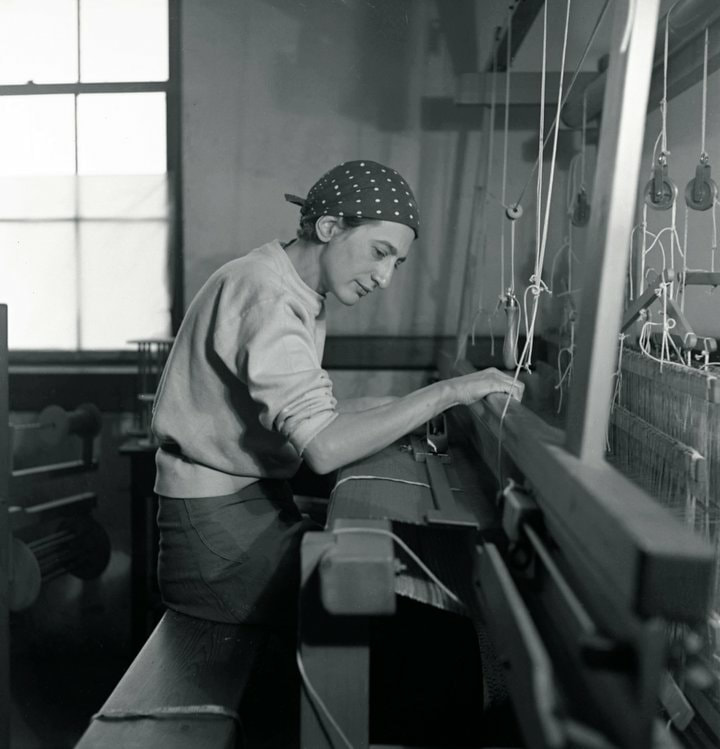
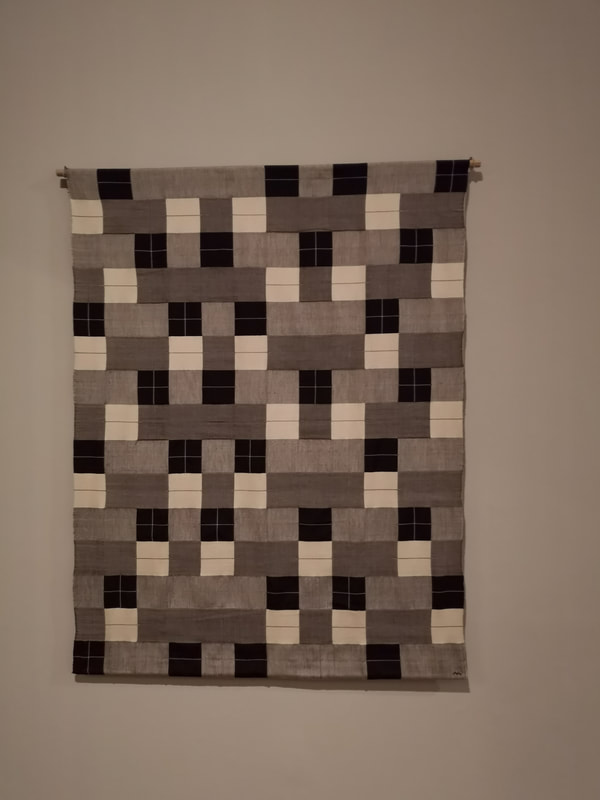

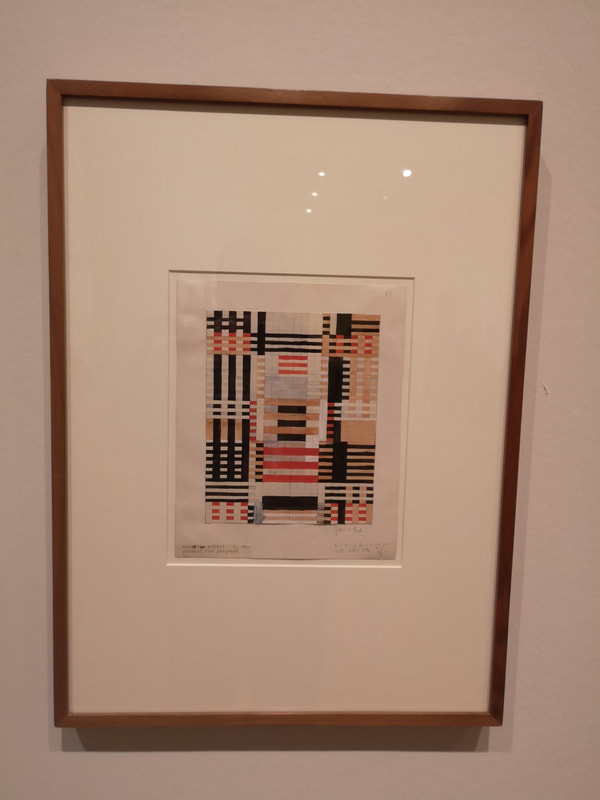
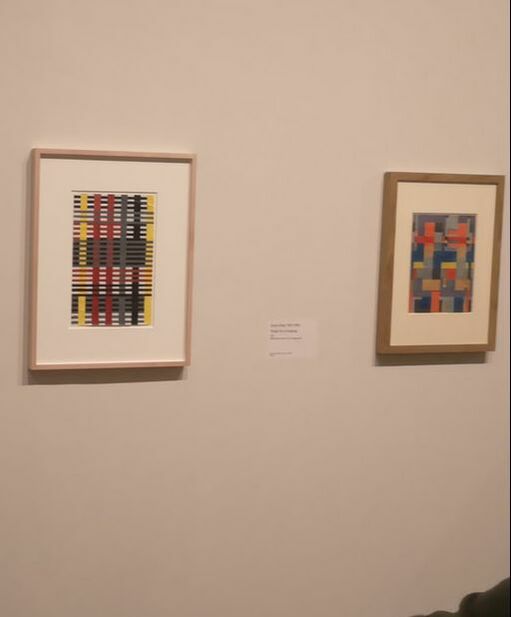
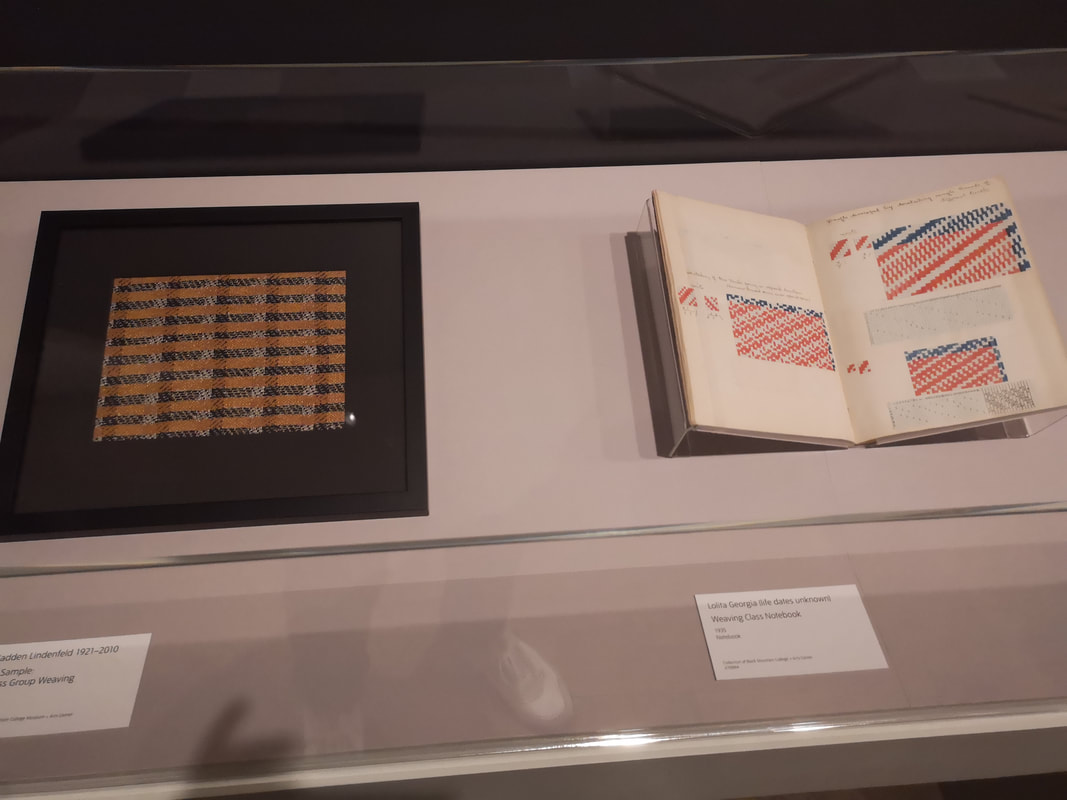

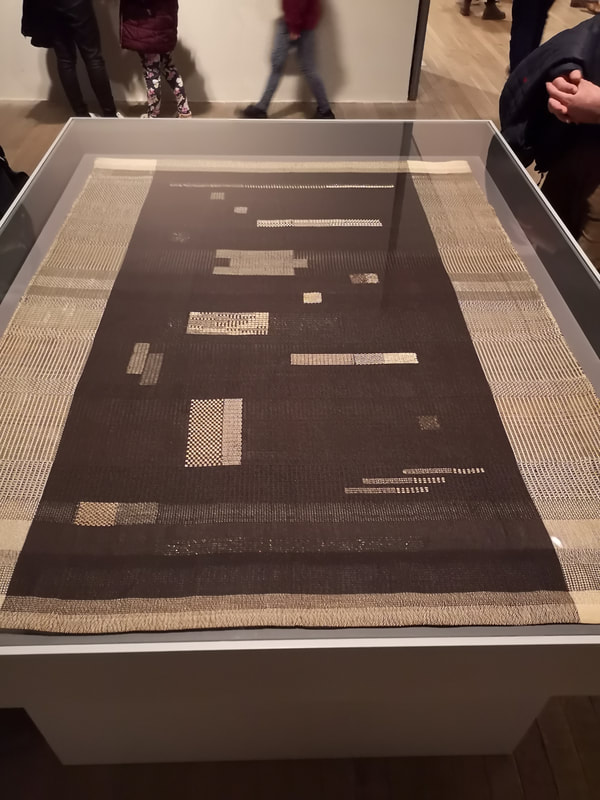
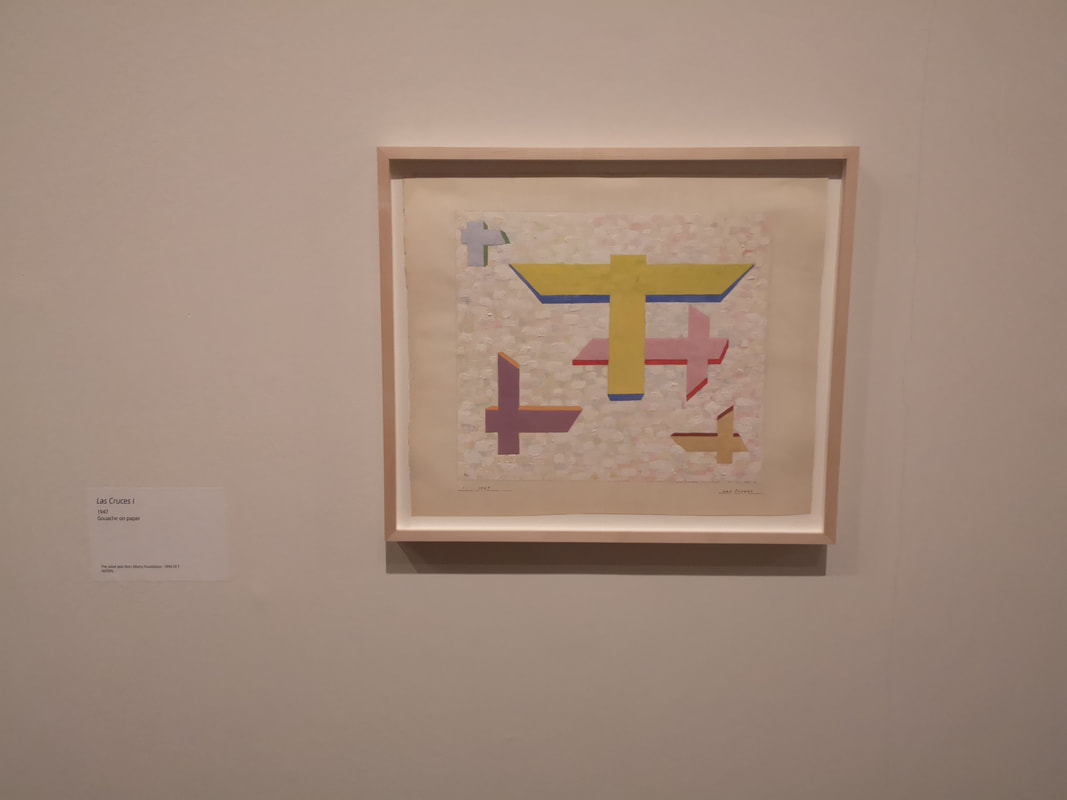
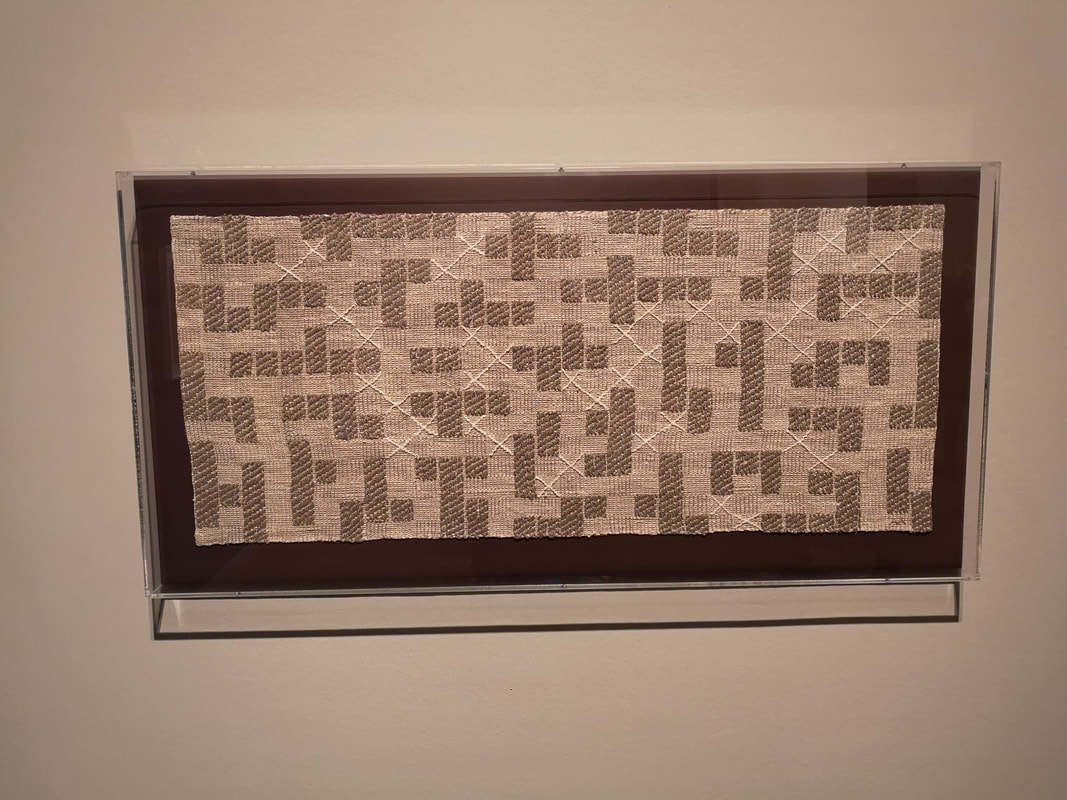
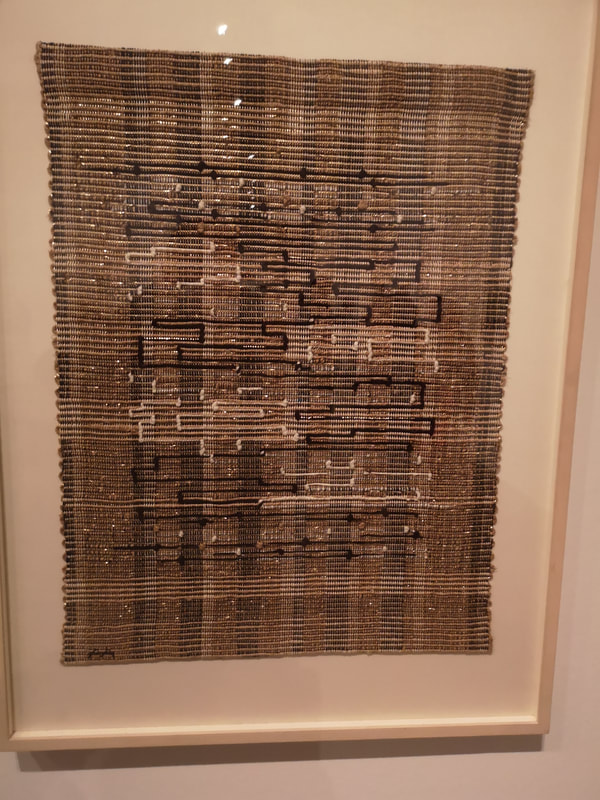




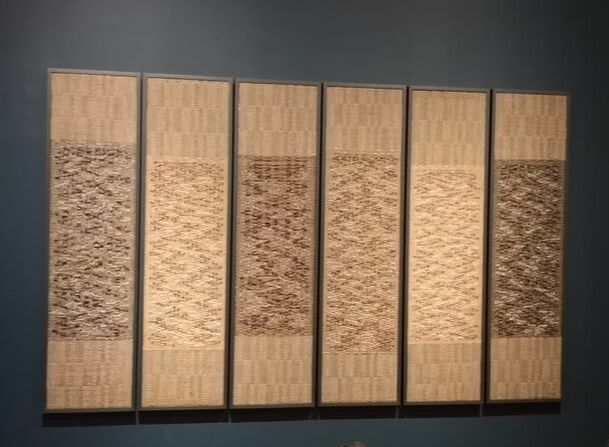
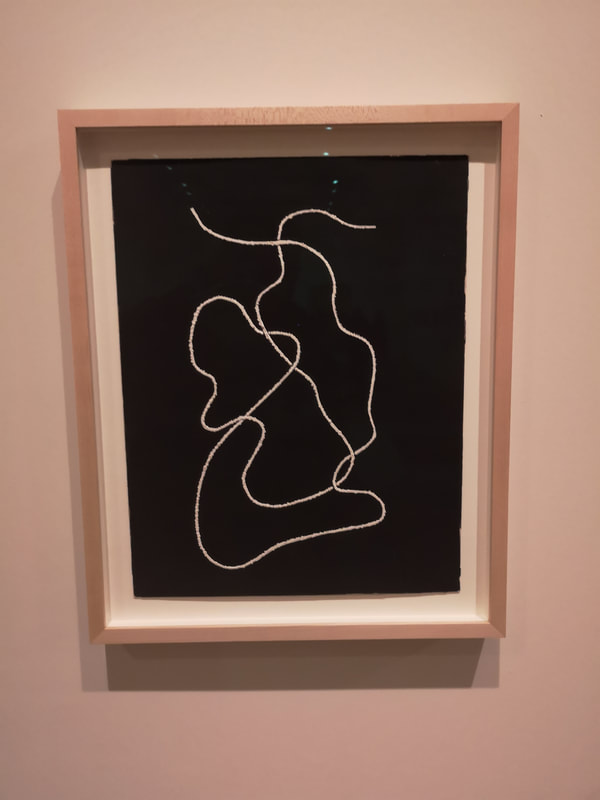


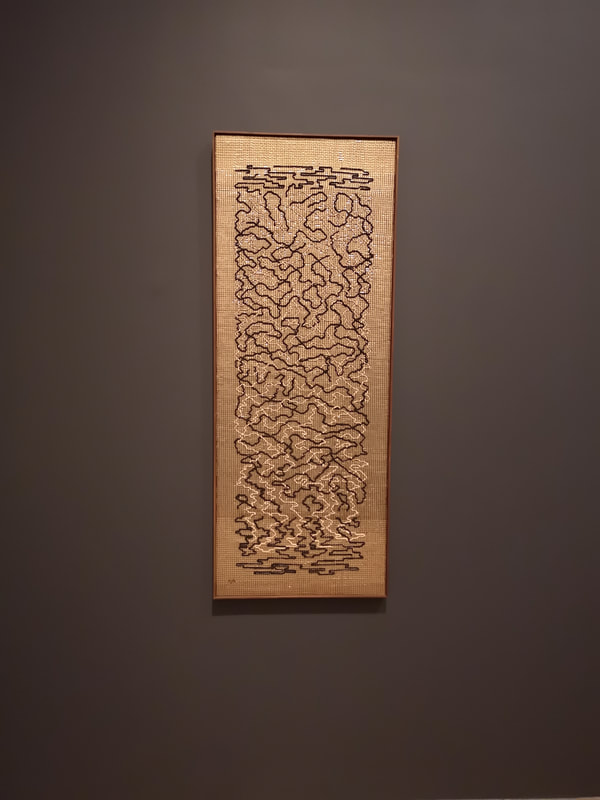

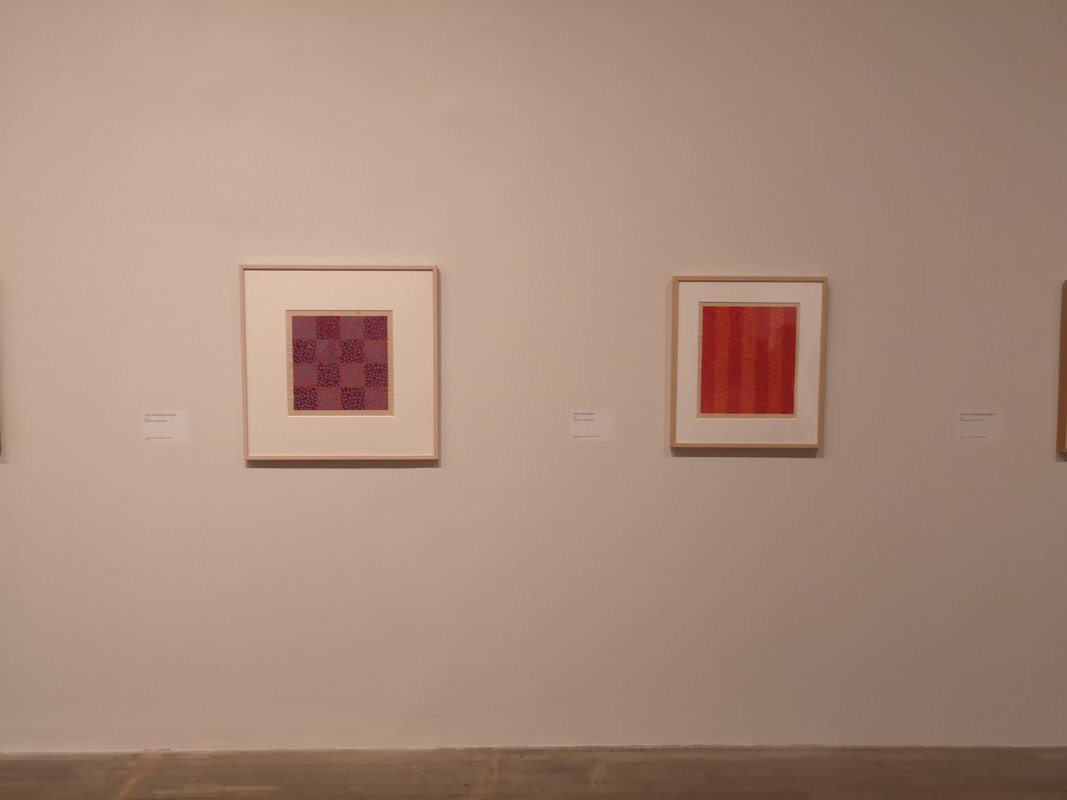
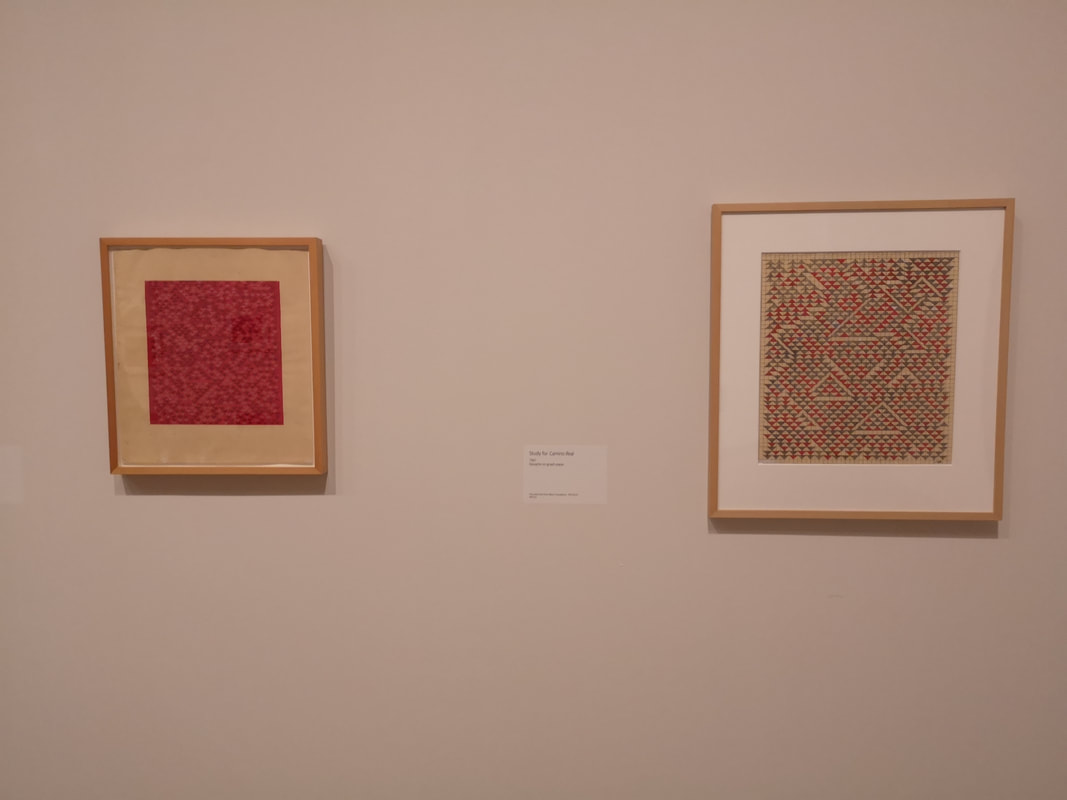
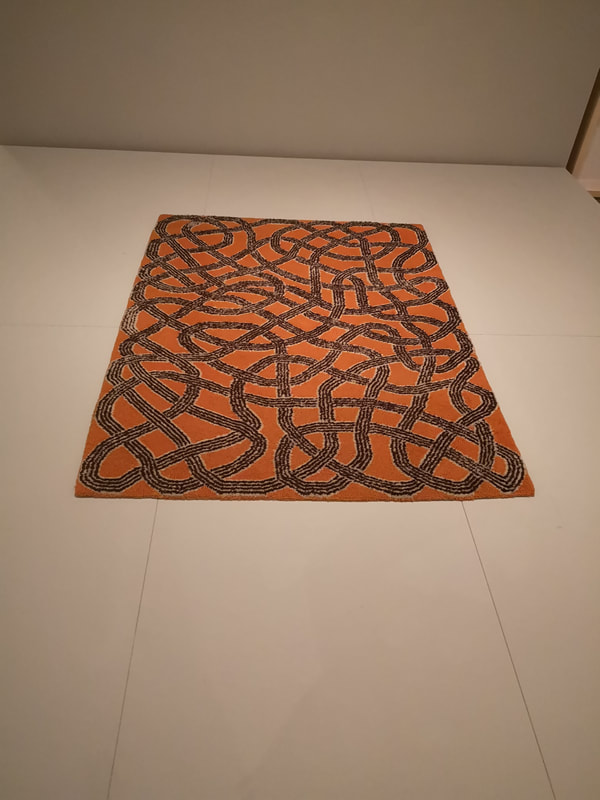
 RSS Feed
RSS Feed